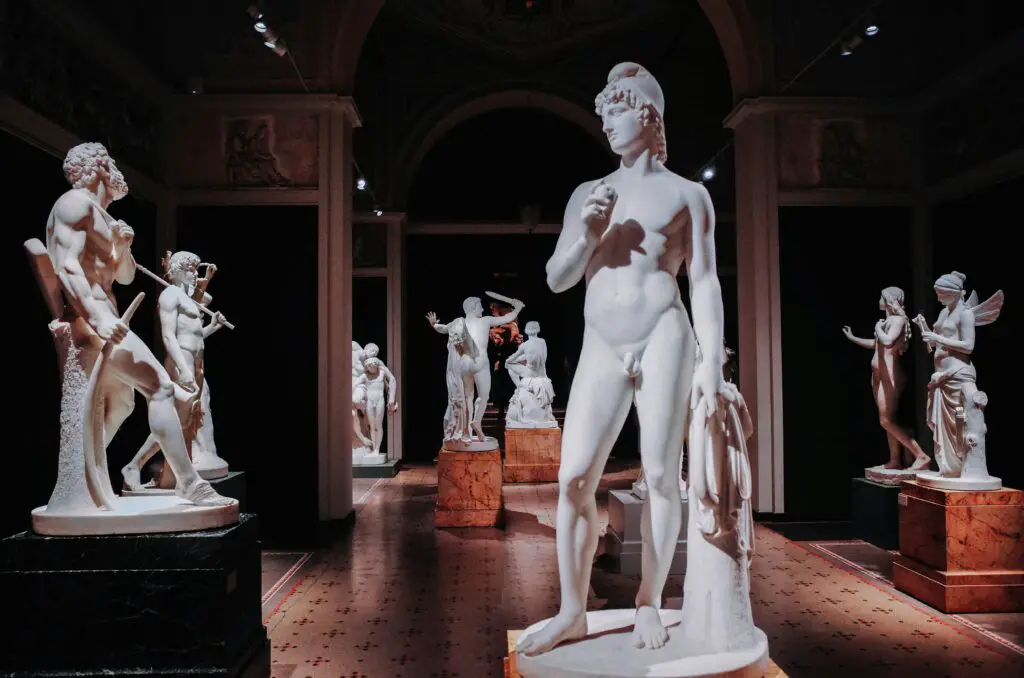Thermo-hygro microclimates aside, public sculpture faces its own climate of risks: people, weather, opportunists, and time conspire to threaten artworks installed in open spaces. At the heart of good anti-theft design is a clear set of priorities that balances public access, conservation needs, aesthetic integrity, and security effectiveness. Start by pinning down measurable success criteria: how visible should the work be, how reversible must fixes remain, what acceptable risk level does insurance allow, and how much maintenance can the owning body realistically provide? Those questions shape everything from anchor type to surveillance strategy. Getting stakeholder alignment early — artists, fabricators, curators, municipal authorities, insurers, and the local community — prevents expensive surprises later. When everyone agrees on priorities, you can design security that respects the artwork and the public realm instead of turning plazas into fortresses. Think of anti-theft design as choreography: you plan how people approach, interact with, and move around the piece while subtly steering behavior away from risky interactions. That approach keeps art accessible and alive in public life, without turning it into an easy target.

Project objectives and stakeholder alignment
Start by asking blunt questions and recording the answers: how do people need to access the work for enjoyment and maintenance, what are the conservation priorities for patina and finish, and what level of attack must the installation withstand? These priorities rarely align perfectly, so negotiation becomes design work. Artists often demand minimal visible interference; conservators insist on reversibility and material compatibility; municipalities focus on liability and public safety; insurers demand proven security measures; fabricators want clean, buildable details that are serviceable over time. Bring these voices together in a kick-off workshop and lock down a priority matrix that ranks access, aesthetics, conservation, and security. Use that matrix to resolve trade-offs later — for example, stealth anchoring may slightly raise fabrication cost but preserve sightlines and meet artist intent. Document decisions as design constraints so procurement and contractors can follow them. That clarity prevents a classic failure mode: a beautiful mounting that looks great on paper but ignores maintenance realities or statutory requirements. In short, treat alignment as deliverable one, because everything else builds on it.
Threat modeling and site risk assessment
An effective anti-theft plan starts with a granular threat model. Don’t stop at “someone might steal it”; list vectors: opportunistic grabs during quiet hours, targeted theft using cutting tools, crane-assisted removal for high-value bronzes, vandalism like graffiti or corrosive chemicals, and even politically motivated attacks. Assess likelihood by combining site factors — isolation, foot traffic, nearby transit, and historical crime rates — with object-specific factors like portability, resale value, and recognizability. Impact analysis should include direct loss, repair costs, reputational damage, and cultural harm if the work holds community significance. Use a simple scoring grid to prioritize — high-likelihood, high-impact items get the strongest protections. Also consider seasonal patterns: festivals bring crowds and caretaking distractions, while winter freezes might loosen ground anchors. Once risks are prioritized, tailor measures to the most probable and damaging scenarios rather than wasting resources on remote hypotheticals.
Material and conservation constraints
Material choice drives vulnerability. Bronze sculptures are tempting theft targets because of metal value and relative ease of removal if anchors are weak, but aggressive anchoring or welding can irreparably damage historic patinas. Stone and ceramic works may resist theft but crack under impact or covert tool-tampering and require careful support to prevent fracture. Weather-sensitive mixed-media works — wood, textiles, polymers — can degrade if security additions introduce galvanic corrosion or trap moisture. Conservation ethics demand reversibility and material compatibility: coatings, sacrificial anodes, or stainless steel anchors must not accelerate corrosion or alter appearance. Always consult conservators before specifying surface-penetrating security hardware. If an anchor will contact a patinated surface, use isolation layers or floating mount designs to avoid stress concentrations. The goal is to harden theft resistance while keeping the original material behavior intact over decades.
Structural and foundation design
Anchors only work if the whole load path is engineered — from artwork to fastener to footing to soil. Design for worst-case uplift and lateral loads, factoring in human torque, crane jacking, and even vehicle impact scenarios. Anchor sizing follows from load calculations and soil-bearing capacity: rocky ground supports smaller footings than soft fill. For large installations consider deep micropiles or continuous concrete rafts to resist tampering and progressive failure. Avoid relying solely on surface bolts; embed anchors into foundations and use shear plates or dowels sized to fail in a controlled way that protects the artwork rather than causing brittle breakage. Always specify corrosion allowance and longevity for buried connections, and plan for inspection access. A well-designed foundation spreads loads so a thief prying a bolt meets the uncompromising resistance of the earth itself.
Tamper‑resistant and concealed anchoring solutions
You want anchors that are strong but discreet — visible hardware is a temptation and an eyesore. Recessed embeds and concealed dowels keep fixings out of sight, and tamper-proof fasteners (one-way security bolts, custom heads) raise the bar for opportunists. Use sacrificial shear pins or breakaway features where appropriate: design them so common attacks shear the sacrificial part rather than damaging the sculpture. That makes maintenance easier and avoids catastrophic loss. For high-value works, consider proprietary locking couplers or embedded mechanical couplings that require specialized tools to disengage. Document all embedded systems thoroughly so conservators and municipal maintenance crews know how to service them without damaging the work. Concealment also aids aesthetics — the sculpture looks as the artist intended while being robustly secured.
Reversible and maintainable mounting systems
Reversibility and maintainability must be built into the security concept. Quick-release mounts let conservators remove works for treatment or emergency retrieval without cutting or destructive force. Removable plinths or mechanical couplings designed for maintenance provide a practical path for scheduled conservation and disaster response. Simulate removal during fabrication to refine procedures and ensure tools, access slots, and removal clearances exist. Create emergency relocation protocols that coordinate with local law enforcement and transport vendors and include a checklist for temporary desinstallation: fasten points, lifting slings, and crating specs. Keep spare parts and specialist tools in secure storage and maintain training for staff so removal can be performed safely and quickly when needed. Designing for removal reduces the odds that emergency decisions lead to irreversible interventions.
Landscape and urban design as layered security
Security can be woven into the landscape so it reads as design, not defense. Use sightline management and subtle grading to create natural surveillance and discourage concealed approaches. Low hedges, planters, or sculpted berms act as unobtrusive barriers that deter close contact without blocking access entirely. Seating orientation and footpath routing guide visitors into safe, contemplative zones while keeping vulnerable back approaches visible. Lighting ties into the landscape — uplighting and path lighting improve nocturnal visibility without creating glare on surfaces. Integrate security into placemaking: a thoughtfully landscaped base can elevate aesthetic value while adding layers of deterrence. This approach maintains civic openness and prevents the alienation that overt barriers can cause.
Lighting, CCTV, and sensor strategy
Security electronics are useful but must be sensitively applied. Proper lighting deters opportunists and reduces camera false negatives, but avoid fixtures that bleach or heat surfaces and interact poorly with conservation goals. CCTV cameras should be placed to maximize coverage of vulnerability zones — anchor points, rear access, and probable removal paths — while respecting privacy laws and public sensibilities. Use analytics carefully: motion-triggered recording and AI-based behavior analysis can reduce bandwidth and human monitoring load, but set thresholds to minimize false alarms from birds or routine maintenance. Integrate sensors like vibration, tilt, and strain gauges near anchor assemblies and pair them with tiered alarm logic: minor vibration triggers local logging and higher thresholds trigger notifications. Maintain a sensible alarm workflow to prevent staff desensitization to alerts.
IoT, telemetry, and power solutions for remote monitoring
Remote sculptures need reliable telemetry. Choose connectivity based on site realities — cellular, LoRaWAN, or mesh networks — and design telemetry to prioritize essential signals (tilt, shock, unauthorized movement) to save power and data costs. Use low-power sensing with event-based wake-ups and schedule heartbeat reports to balance battery life and situational awareness. Solar or mains power can support continuous monitoring but plan for redundancy with battery backups and failover thresholds. Implement secure communication channels and encryption to prevent spoofing. Build alarm workflows that escalate intelligently: onsite guard notification, followed by curator or municipal contact and, at the highest level, law enforcement. Test these chains regularly; technology is only as useful as the people and procedures behind it.
Documentation, provenance, and forensic readiness
If theft happens, rapid recovery often depends on documentation. High-resolution 3D scans, detailed photographic records, and material inventories make it possible to identify and repatriate recovered pieces. Consider discrete serial tagging or microstamping on non-visible surfaces that aid forensic matching without harming aesthetics. Keep legal title documentation and provenance records centralized and accessible to authorities. Where appropriate, register artworks with national stolen-art databases and share alert protocols with customs and law enforcement networks. Forensic readiness also includes storing manufacturing and installation drawings, anchor specs, and removal procedures — that information helps law enforcement reconstruct theft methods and improves the odds of recovery.
Operations, inspection, and lifecycle maintenance
Security is ongoing, not a one-time installation. Set inspection schedules for anchors, fixings, and concealed couplers; check for loosening, corrosion, or vandalism. Load-test anchors periodically and run simulated attacks during maintenance windows to verify integrity. Log conditions with photographic evidence and tight metadata so trends — like accelerating corrosion at a particular joint — surface early. Include cleaning and conservation cycles in the security plan since surface maintenance can reveal hidden damage or tampering. Train maintenance staff to spot indicators of compromise and create clear reporting channels. This operational discipline reduces surprises and extends both conservation life and anti-theft effectiveness.
Legal, ethical, and accessibility considerations
Don’t let security trample rights or accessibility. ADA compliance means mobility devices must still be able to access viewing areas, so low curbs or bollards must be carefully sited. Public-right-of-way and municipal permitting often constrain anchor placement and foundation depth; consult local codes early. Cultural sensitivity demands consultation with communities where works have spiritual or repatriation significance; heavy-handed security that isolates sacred objects can cause harm. Also attend to public trust — overly aggressive measures can signal distrust and alienate audiences. Balance legal and ethical constraints by documenting decisions, obtaining permits, and engaging communities in design choices.
Costing, procurement, and contractual safeguards
Budget realistically: installation cost is only a fraction of lifecycle expense. Account for maintenance, monitoring subscriptions, spare parts, and scheduled anchor retests. Work with insurers to understand how design choices influence premiums and whether certain anti-theft measures reduce long-term costs. Build security and maintenance obligations into artist and fabrication contracts: define who maintains anchors, who holds keys to specialty couplers, and how conservation access is handled. Procurement should include prototype testing and contractor vetting to ensure workmanship matches design intent.
Pilot testing, case studies, and phased deployment roadmap
Before full rollout, pilot solutions on a single site or with a mockup. Load-test anchors, simulate tampering attempts, and rehearse emergency removal. Gather stakeholder feedback — artists, conservators, municipality — to refine aesthetics and maintenance. Use pilots to evaluate monitoring workflows and false-alarm rates. Document lessons in case studies and incorporate them into procurement specs. Phased deployment reduces risk and provides data to make smarter investments as more installations follow.
